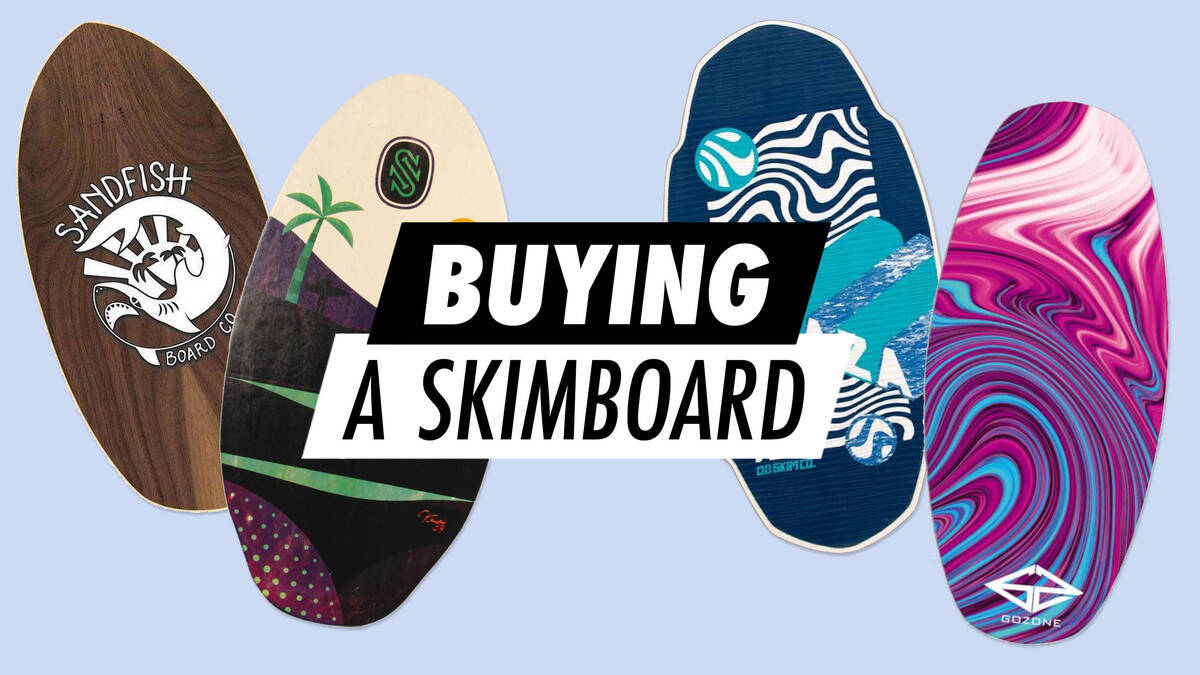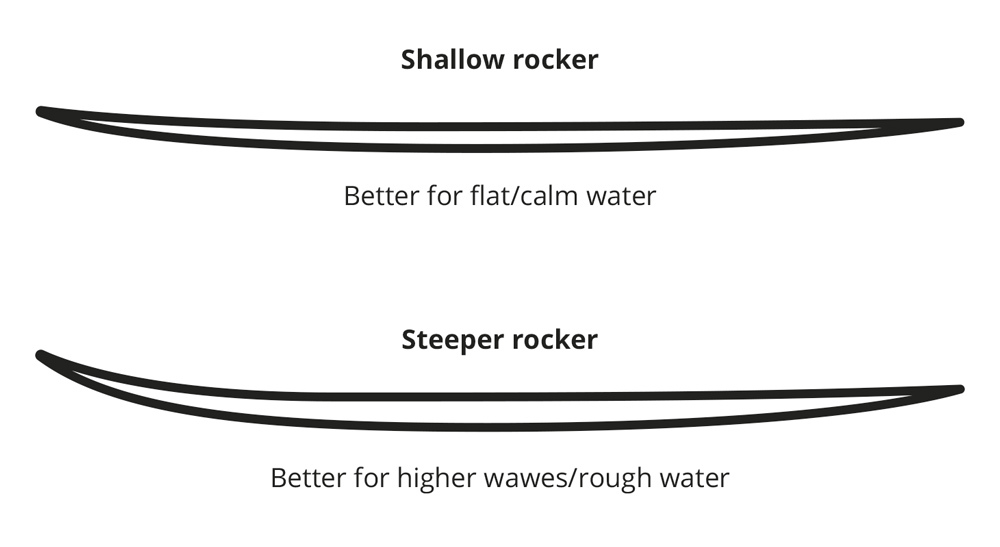Buying a skimboard

Skimboarding (riding along shorelines on flat boards) is gaining more and more popularity. But don’t let the simple looks fool you - there are many variables to think of before you buy your skimboard.
1. Type of board - foam vs. wood
There are two main types of skimboards based on the material used for their construction - foam or wood, and foam boards. Foam boards come in a sandwich construction where foam core is placed between layers of fiberglass and epoxy. The 'sandwich boards' are the high-end products which are more fragile, with good buoyancy, and suitable for bigger waves/skim. There are also 100% foam boards which are more playful, have high buoyancy, and are good for more recreational purpose and kids. This type, however, is more typical for bodyboards, so if you are looking for a fun board for your kid, check out our bodyboard section.
There are also other variations, for example, carbon boards, but they are more professional and in a considerably higher price range.
Skimboarding divides into two categories: flatland/inland (in shallow, sandy waters such as creeks, lakes, puddles, rivers and lower tides along the beach) and wave skimming (at shore breaks into deeper waters with incoming waves). Based on these two categories and your skill level, you can choose whether to buy a foam core or wooden board.
- Foam core boards are generally preferred by wave skimmers because they are lighter, thicker, and more flexible, which allows them to float easier on top of the waves; their flexibility and buoyancy are suitable for wavy conditions. Foam boards are generally used by intermediate and advanced riders or those more interested in doing tricks with waves.
- Wooden boards are more suitable for flatland (also inland) skimming. Because they are heavier (have low buoyancy), wooden skimboards also sink quicker, therefore, it is better to use them in shallow waters. Those boards are more suitable for beginners (in terms of lower costs and durability) or riders who would like to perform tricks on ramps, rails etc., where the wood is more resistant.
2. Size
The size of your skimboard is determined by several factors, such as your weight, height, speed (how fast you can run to catch a wave or slide), your experience, and style.
Speed is one of the crucial factors. The higher speed you can achieve, the more buoyancy you get, making the skimming easier. However, buoyancy is also dependent on the weight you put on the board. The bigger the board, the higher buoyancy you get.
Experienced skimmers would normally prefer smaller boards since they are more maneuverable and easier to perform tricks on.
Less experienced skimmers, however, need a bigger board that can support their weight, which makes it easier to skim on the surface, is easier to balance (due to increased foot area) and is generally faster.
3. Curvature (rocker) and tail of the board
Flatland skimboards are mainly twin tip, or symmetrical, where the nose and the tail have the same shape. This allows you to come out of a trick in both directions. The most common twin tip shapes are Streamline and Proto. The Streamline shape has more maneuverability, while the Proto shape gives more stability.
The flatland skimboards remind more of skateboarding since they are often used for tricks and have the wooden, durable construction, which allows you to get on rails and obstacles. Those boards are perfect for you, who want to transfer your skateboarding skills onto the water.

Boards with different tip and toe are typical for wave skimming. Those boards are directional and relate more to the surfing.
The rocker is the curvature of the nose (tip) of the board. A steeper rocker (more bent nose) makes it easier to skim wavy waters but can slow you down. A flatter nose, with shallow rocker, is better for calm waters where you can gain more speed.

On the other end of the board, you have the tail. The tail has several variations, but the most common are the pintail, the squash tail, rounded and W-tail (swallow tail). Pintails provide a good balance in the water, whereas square (and also W-tail variations) boost the agility of the board, making it better for tricks.

Ready?
So now you know what to do to get the skimboard most suitable for your needs:
- Decide on type and material
- Pick the right size
